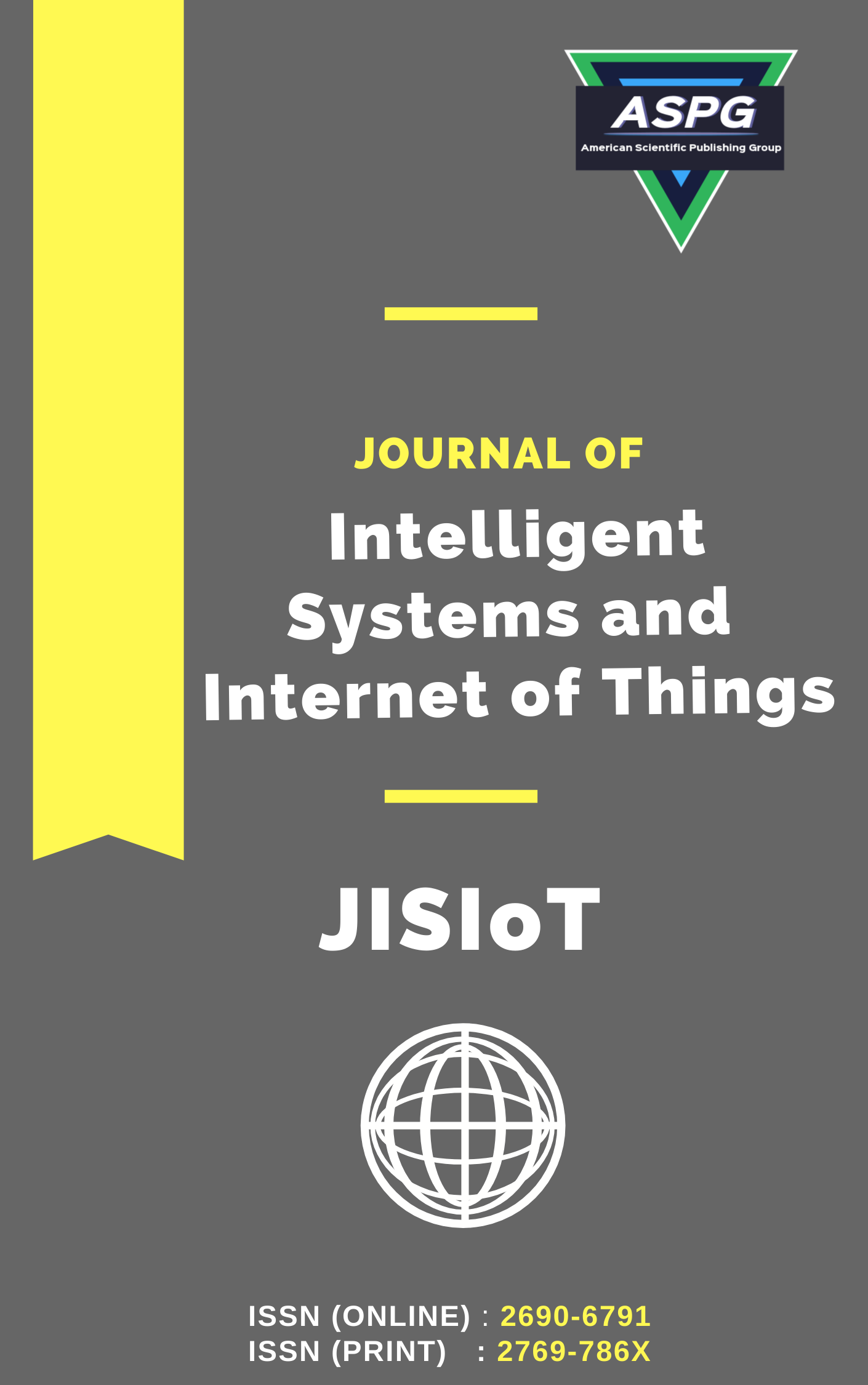

Volume 16 , Issue 1 , PP: 166-175, 2025 | Cite this article as | XML | Html | PDF | Full Length Article
M. Bheemalingaiah 1 * , G. Sreenivasulu 2 , L. Venkateswa Reddy 3 , Khaja Mahabubullah 4 , A. Ramesh Babu 5 , D. Himagiri 6
Doi: https://doi.org/10.54216/JISIoT.160114
This paper proposes an enhanced Non-Dominated Sorting Genetic Algorithm -II algorithm to optimize IoT service composition by incorporating national energy consumption requirements and user experience, areas often overlooked in traditional models that primarily focus on time, cost, and quality. The original NSGA-II algorithm is prone to premature convergence and local optima issues during population iteration. To address these limitations, we introduce a novel evaluation model and improve the elite retention strategy of the NSGA-II algorithm. The improved algorithm balances exploration and exploitation through dynamic crowding distance adjustment and adaptive selection pressure, enhancing diversity and avoiding local optima. Experimental results demonstrate that the I-NSGA algorithm not only reduces running time by 5.916% but also achieves a smoother Pareto surface, indicating a more optimal distribution of solutions. The novelty of this approach lies in its comprehensive inclusion of energy consumption and user experience, the timeliness in addressing emerging IoT optimization challenges, and the relevance to current IoT service composition needs. This validates the effectiveness and advancement of the proposed model and algorithm, providing a robust and efficient solution for IoT service composition optimization.
Non-Dominated Sorting Genetic Algorithm , Service Composition , Multi-Objective Optimization , Energy Consumption , Pareto front , Internet of Things
[1] I. Rafiq, A. Mahmood, S. Razzaq, S. Hassan, and M. Jafri, “IoT applications and challenges in smart cities and services,” J. Eng., vol. 22, pp. 22–32, 2023. doi: 10.1049/tje2.12262.
[2] W. B. Freitas and J. R. Bertini Jr., “Random walk through a stock network and predictive analysis for portfolio optimization,” Expert Syst. Appl., vol. 218, p. 119597, May 2023. doi: 10.1016/j.eswa.2023.119597.
[3] C.-H. Yang, Y.-Y. Liu, C.-H. Chiang, and Y.-W. Su, “National IoMT platform strategy portfolio decision model under the COVID-19 environment: Based on the financial and non-financial value view,” Ann. Oper. Res., vol. 328, pp. 1151–1179, 2023. doi: 10.1007/s10479-022-05016-4.
[4] P. G. Delaney et al., “Cost-effectiveness of lay first responders addressing road traffic injury in Sub-Saharan Africa,” J. Surg. Res., vol. 270, pp. 104–112, 2022.
[5] P. Asghari, A. M. Rahmani, and H. H. S. Javadi, “Privacy-aware cloud service composition based on QoS optimization in Internet of Things,” J. Ambient Intell. Humaniz. Comput, vol. 13, no. 11, pp. 5295–5320, 2022.
[6] D. Georgia, E. Evangelia, C. Georgios, M. Christos, and K. Thomas, “Evaluation of end user requirements for smart home applications and services based on a decision support system,” Internet Things, vol. 16, p. 100431, 2021.
[7] M. Guzel and S. Ozdemir, “Fair and energy-aware IoT service composition under QoS constraints,” J. Supercomput., vol. 78, pp. 13427–13454, 2022. doi: 10.1007/s11227-022-04398-3.
[8] K. Ullah, T. A. Khan, and G. Hafeez, “Demand side management strategy for multi-objective day-ahead scheduling considering wind energy in smart grid,” Energies, vol. 15, p. 6900, 2022. doi: 10.3390/en15196900.
[9] M. Wu, K. Li, S. Kwong, and Q. Zhang, “Evolutionary many-objective optimization based on adversarial decomposition,” IEEE Trans. Cybern., vol. 50, pp. 753–764, 2020.
[10] H. Chouat et al., “Adaptive configuration of IoT applications in the fog infrastructure,” Computing, vol. 53, pp. 1–26, 2023. doi: 10.1007/s00607-023-01191-9.
[11] H. Zhao, C. Zhang, J. Ning, B. Zhang, P. Sun, and Y. Feng, “A comparative study of the evolutionary many-objective algorithms,” Prog. Artif. Intell, vol. 8, pp. 15–43, 2019.
[12] M. Rahbari et al., “A risk-based green location-inventory-routing problem for hazardous materials: NSGA II, MOSA, and multi-objective black widow optimization,” Environ. Dev. Sustain., vol. 24, pp. 2804–2840, 2022. doi: 10.1007/s10668-021-01555-1.
[13] S. B. Selçuklu, “Multi-objective genetic algorithms,” in Handbook of Formal Optimization, A. J. Kulkarni and A. H. Gandomi, Eds. Singapore: Springer, 2023. doi: 10.1007/978-981-19-8851-6_31-1.
[14] N. A. Masruroh et al., “Priority-based multi-objective algorithms for green supply chain network design with disruption consideration,” Prod. Eng., pp. 1–24, 2023. doi: 10.1007/s11740-023-01220-8.
[15] E. El-Shafeiy, K. M. Sallam, R. K. Chakrabortty, and A. A. Abohany, “A clustering-based swarm intelligence optimization technique for the Internet of Medical Things,” Expert Syst. Appl., vol. 173, p. 114648, 2021.